Tất cả chuyên mục

When speaking about Dong Thap Muoi (Plain of the Reeds), a region in the lower Mekong basin rich in natural resources, one usually thinks of Dong Thap or An Giang province. But the Lang Sen Wetland Reserve in Long An province is the lowland with the most popular specialties of Dong Thap Muoi.
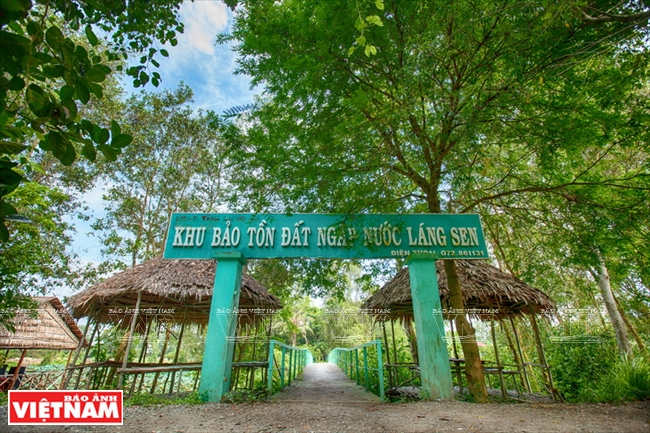
After travelling through vast rice fields and immense cajuput forests, we arrived in Lang Sen Wetland Reserve, some 140 km from Ho Chi Minh City.
We had to go through a small canal on a motor boat to reach the reserve which lay peacefully in a fragrant blooming lotus swamp.
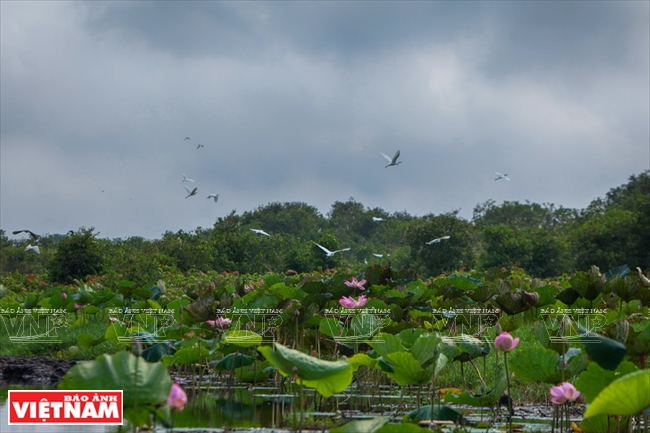
Taken by motorbike by Nguyen Van Hoe, a staff from Lang Sen’s tourism division, we went on small paths along which were cajuput trees. We saw a spectacular view of thousands of birds flying up from vast wet fields while enjoying the peaceful air spread with the sharp and fresh scent of grass and plants. This was truly an extraordinary experience for any visitor to Lang Sen.
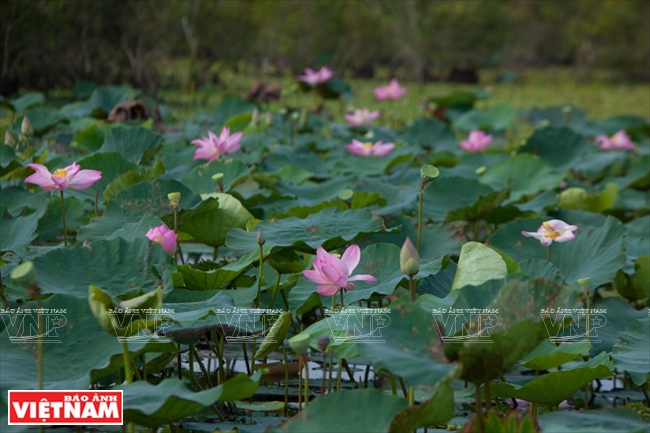
Hoe also took us by motor boat to beautiful lotus lagoons in Lang Sen where flocks of spoonbills, teals and kingfishers were searching for food. Hoe said the reserve now has 50 hectares of lotus and 40 hectares of rice to create a favorable habitat for species of birds and other animals.
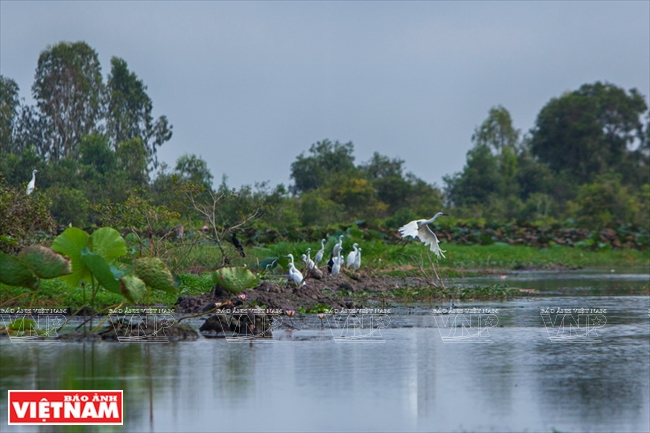
Established in 2004, Lang Sen covers a total natural area of 5,030 hectares, mostly in Vinh Loi and Vinh Dai communes, Tan Hung district of Long An. The reserve is Vietnam’s seventh Ramsar site (wetland site of international importance under the Ramsar Convention).
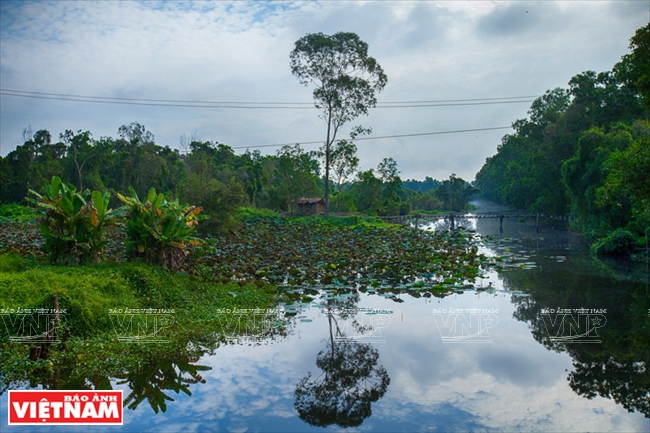
Called a miniature Dong Thap Muoi, Lang Sen includes good examples of riverine forest habitats and large areas of lotus swamp, semi-natural melaleuca forests, swampy forests, and seasonal inundated grasslands.
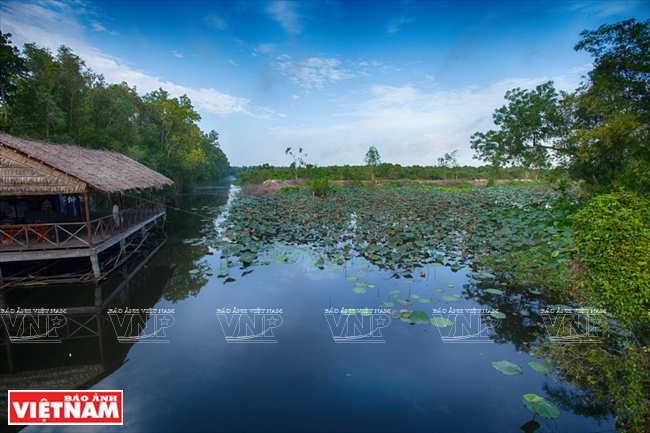
Lang Sen is covered with flora which vary according to the seasonal tides of the Mekong river. There is a cajuput forest which has diverse fauna.
The wetland is home to several wetland-dependent bird species including the globally threatened sarus crane and greater adjutant. Lang Sen supports 87 species of fish, which are important for food for local people, including 27 that are only found in the Lower Mekong such as the globally threatened Mekong giant catfish and the giant carp.
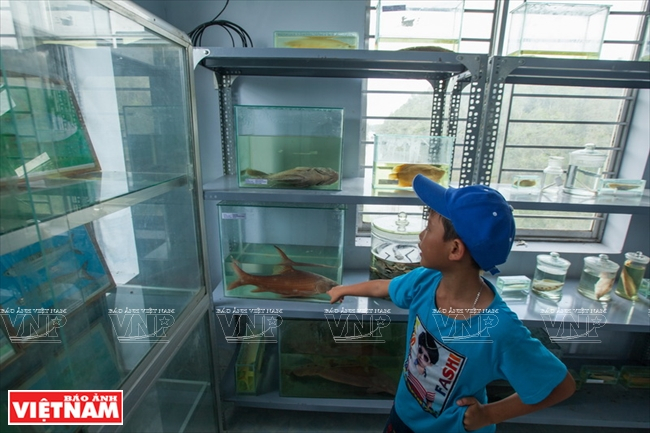
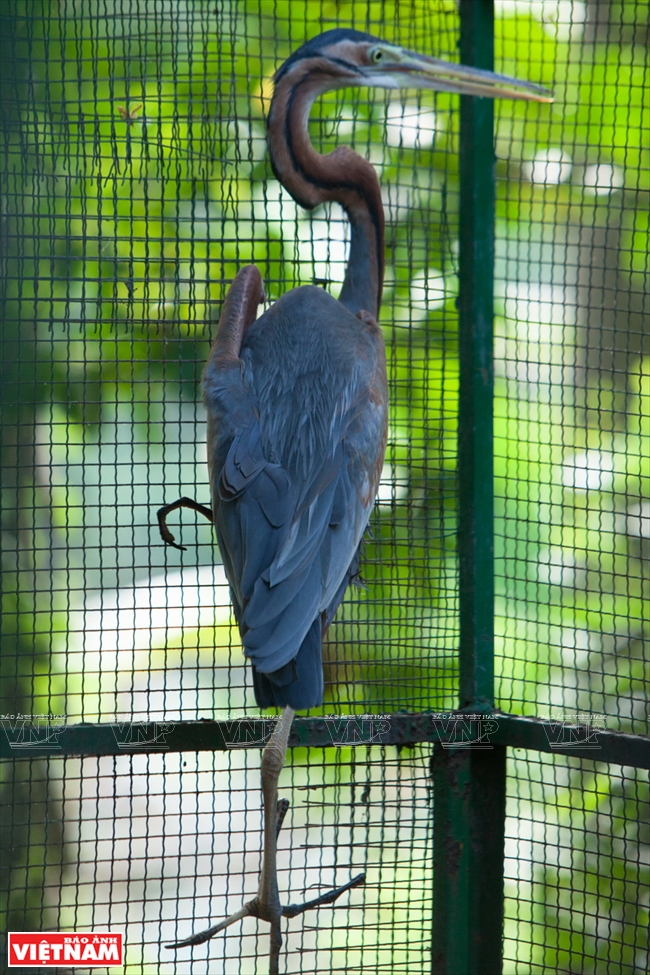
Visiting Lang Sen, one can explore the nature and see the people of Long An – the land regarded as the gateway to the Mekong river delta, which treasures original cultural and historical values of Dong Thap Muoi.
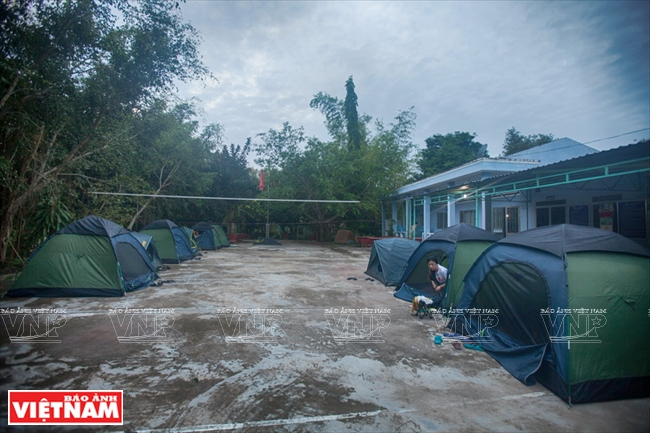
| Lang Sen Wetland Reserve has 156 species of wild plants, most of which are lotus, water lilies, wild rice, pipe grass and water hyacinths. It is the habitat of 86 species of fishes, amphibians and reptiles. The wetland site is also home to 142 species of birds, including the globally threatened sarus crane and greater adjutant, white-winged duck, barn owl, white-rumped shama, spoonbill, ibis, peafowl, painted stork, common teal, mallard and kingfisher. | |
Ý kiến ()